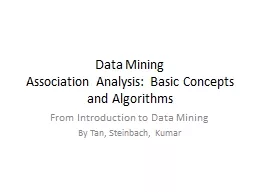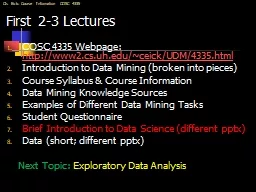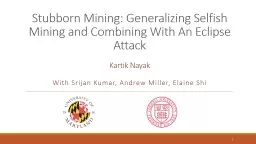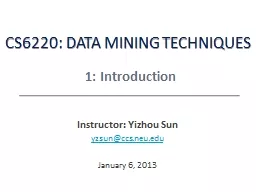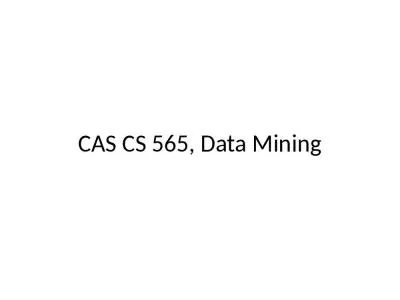PPT-Data Mining Association Analysis: Basic Concepts
Author : calandra-battersby | Published Date : 2018-02-28
and Algorithms From Introduction to Data Mining By Tan Steinbach Kumar Association Rule Mining Given a set of transactions find rules that will predict the occurrence
Presentation Embed Code
Download Presentation
Download Presentation The PPT/PDF document "Data Mining Association Analysis: Basic..." is the property of its rightful owner. Permission is granted to download and print the materials on this website for personal, non-commercial use only, and to display it on your personal computer provided you do not modify the materials and that you retain all copyright notices contained in the materials. By downloading content from our website, you accept the terms of this agreement.
Data Mining Association Analysis: Basic Concepts: Transcript
Download Rules Of Document
"Data Mining Association Analysis: Basic Concepts"The content belongs to its owner. You may download and print it for personal use, without modification, and keep all copyright notices. By downloading, you agree to these terms.
Related Documents

